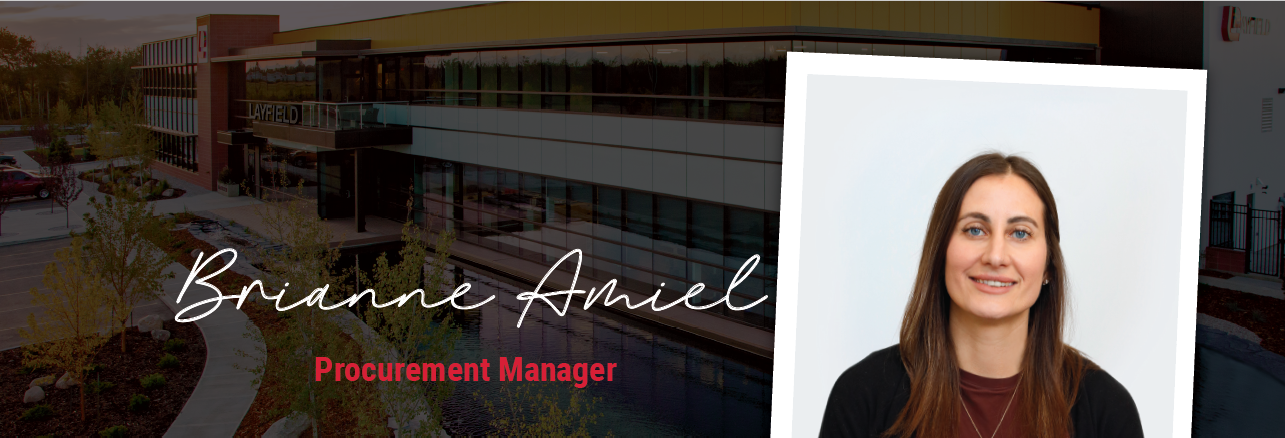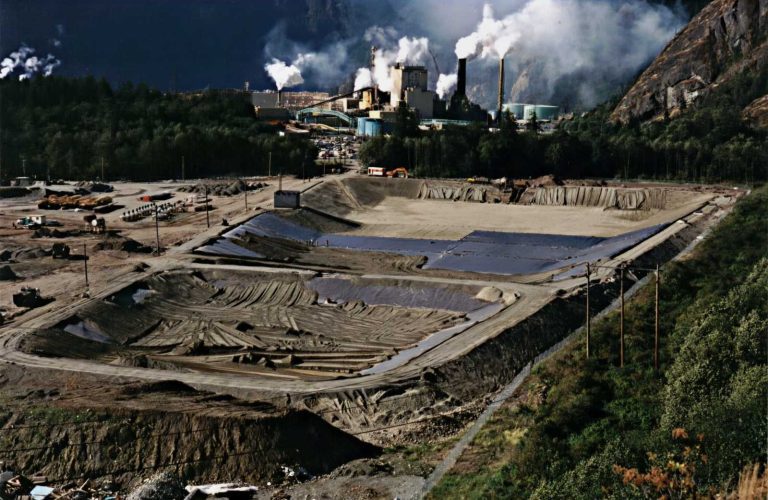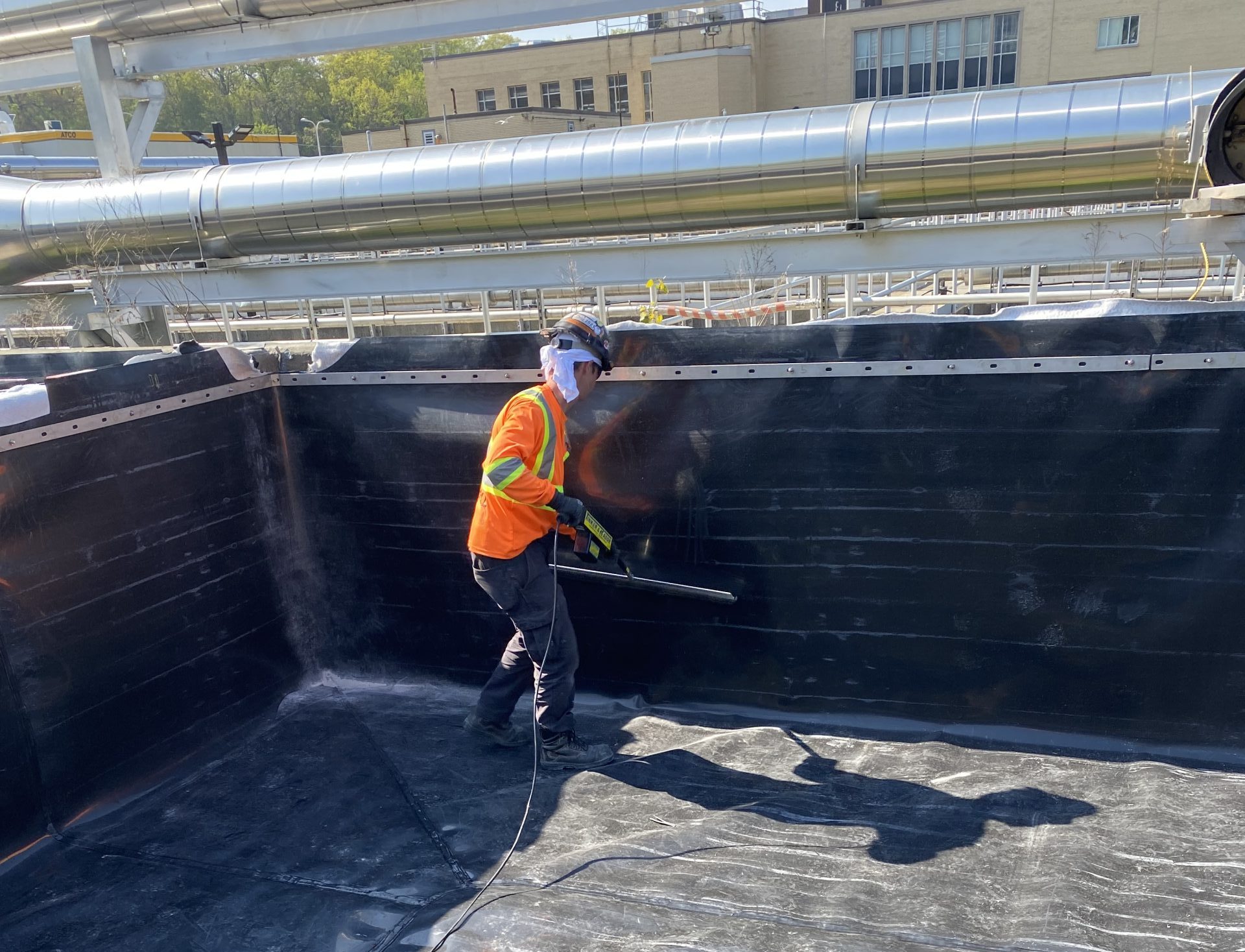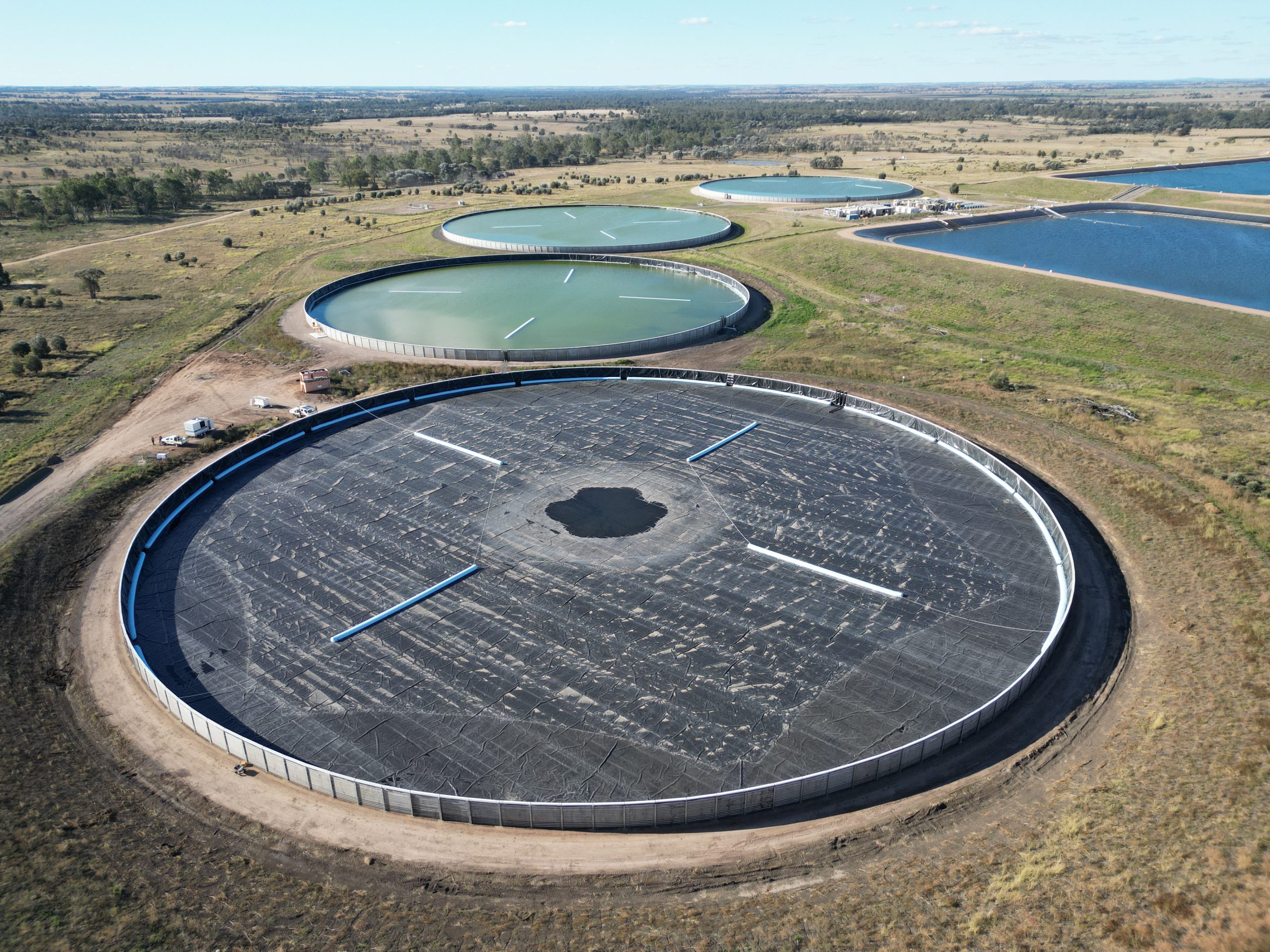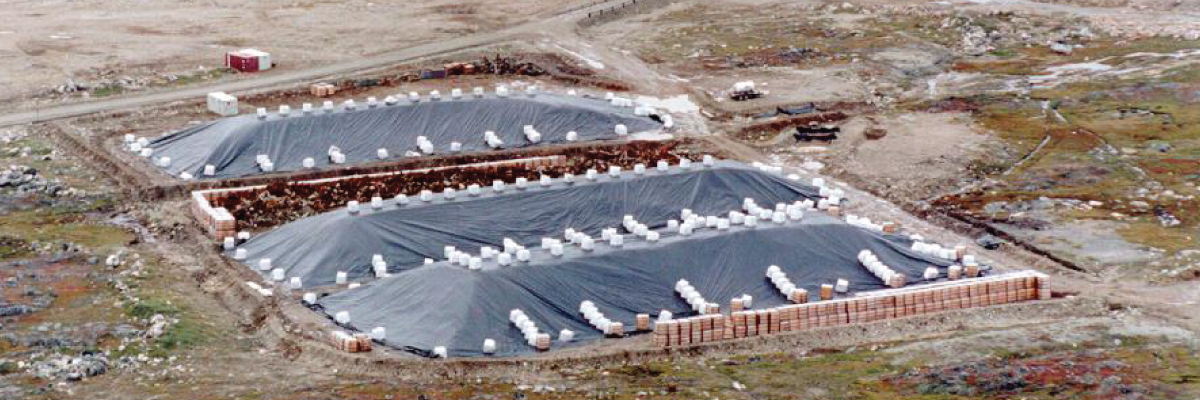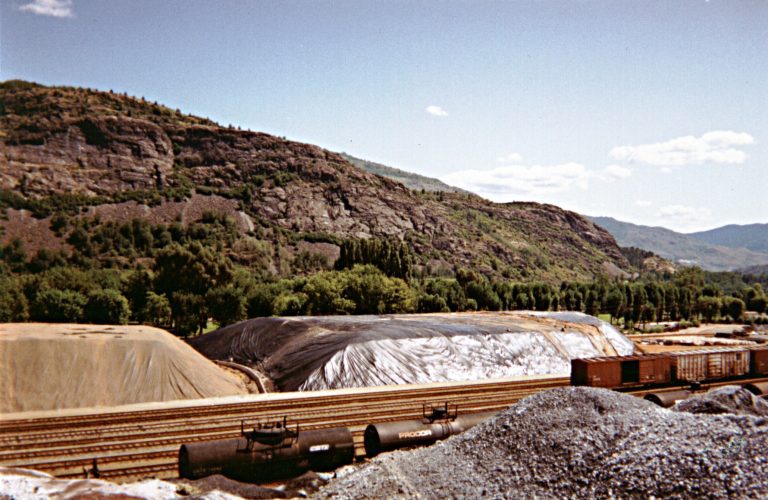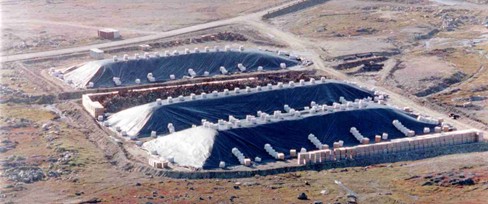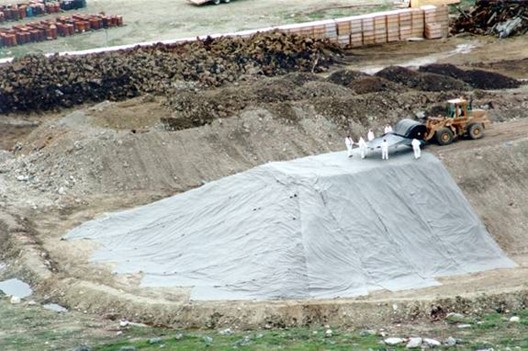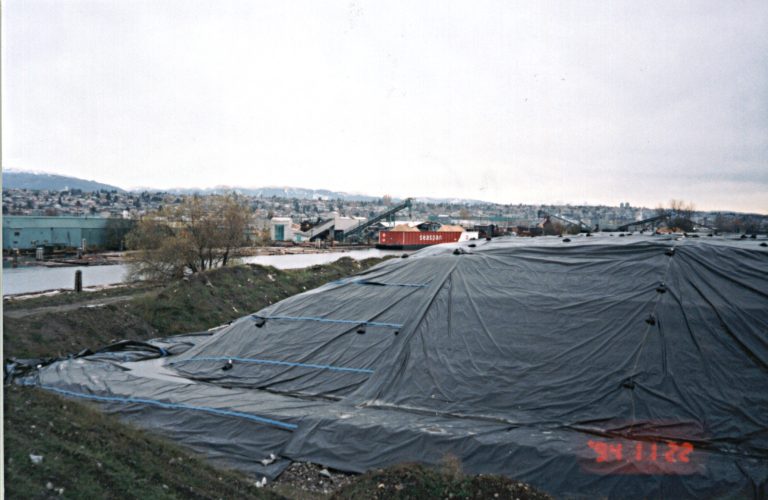Written By Brian Fraser, Vice President
Layfield Geosynthetics | November 2024
Geomembranes are frequently used in soil remediation applications for environmental containment. Environmental remediation is the cleanup of hazardous substances dealing with the removal, treatment and containment of contaminants, including soil, groundwater and sediment. Applications include the treatment and cleanup of brownfield sites and contaminated soils as a result of mining, oil & gas, industrial and military operations. Geomembrane liners are ultra-low permeability barriers designed to control water, chemicals and gas migration. Geomembranes used as soil covers help prevent leaching soil losses and further external contamination as a result of winds and rains.
Soil Remediation
Soil remediation is a critical process aimed at restoring contaminated or polluted soil to a clean and healthy state. It involves various techniques and strategies to mitigate the presence of harmful substances to protect the environment. Different processes, including ex-situ and in-situ methods, are used to remediate soils depending on the degree and toxicity of the contamination. Cleanup and remediation can take days, weeks, or even years, depending on the type of soil, the level of contamination, and the type of remediation used.
Ex-situ remediation methods involve excavation of affected soil from its original location and subsequent treatment on-site or off-site, as well as extraction of contaminated groundwater and further treatment at the surface. In-situ remediation methods mean treating the contamination in its original place without removing the soils or groundwater from their original location. Both ex-situ and in-situ methods are commonly used in remediation applications.
Contaminants found in soil can include heavy metals, pesticides, petroleum products, PFAS, solvents, sludge, and other chemicals. Soil contamination is a significant environmental issue that has detrimental effects on human health, ecosystems, and agricultural productivity.
Remediation processes include bioremediation, chemical remediation and physical remediation, as described below.
- Bioremediation
- Bioremediation is the use of microbes to clean up contaminated soil and groundwater. Microbes are very small organisms, such as bacteria, which live naturally in the environment. Bioremediation stimulates the growth of certain microbes that use contaminants as a source of food and energy.
- Chemical Remediation
- Chemical remediation is an in-situ chemical process used to remove hazardous chemicals from the environment. It uses various methods depending on the application, but most involve oxidation or reduction reactions with inorganic or organic compounds.
- Physical Remediation
- Physical remediation involves the physical removal of contaminated soil from the site. This method is effective in removing large amounts of soil quickly and efficiently, but it can be costly and may not be suitable for all sites. Physical remediation methods include excavation, dredging, and soil washing.
Geomembranes for Soil Remediation
Geomembranes are used in many areas of soil remediation. If the remediation is done on-site, then a geomembrane can be placed to create a temporary remediation pad. The selection of a geomembrane for a temporary remediation pad depends on whether there is any free liquid in the contaminated soil. The presence of liquids requires a higher level of containment.
Soil storage is a common use for geomembranes. If the volume of soil to be remediated is very large, or budgets require that remediation take place over an extended period, then the contaminated soil may need to be stored. A geomembrane-lined storage pad is prepared, and then a soil storage cover can be placed over the top. The cover prevents soil loss from wind and prevents rain from adding liquid to the soil being treated. Lightweight soil storage covers for 3 to 5 years are very common.
Off-site, soil treatment cells can be prepared using geomembranes. Contaminated soils are brought in, treated, and then taken to another location for disposal. These long-term soil treatment cells are constructed as landfills and may have one or more geomembranes depending on regional landfill guidelines. A permanent disposal site for contaminated soils may also be prepared using landfill design guidelines.
Contaminated soil encapsulation is a method where a geomembrane is used to surround a contaminated area of soil without removing the contamination. This is sometimes done on brownfield sites where the contamination levels are low and remediation is prohibitively expensive. The long-term encapsulation of contaminants often requires specialized low permeability geomembranes to be tested to verify the resistance of the specific chemical to be encapsulated. Contaminated soil encapsulation is commonly used for PFAS contaminated soils.
Geomembrane Selection
In less critical applications where soils have lighter levels of contamination, numerous geomembrane types can be used as a protective barrier, including reinforced polyethylene (RPE), reinforced polypropylenes (RPP) and linear low density polyethylene (LLDPE). In more moderate contaminated applications, recommended geomembranes include HDPE, PVC EIA’s, and specially formulated blended HDPE/LLDPE materials. In more critical applications, specially formulated EVOH multiplayer vapor barriers and special bi-modal HDPE materials are recommended. It is also important to comply with Federal and State regulations. In the USA, this includes the Resource Conservation and Recovery Act (RCRA) as part of part of subtitle C for the treatment, storage and disposal of hazardous waste.
Prefabricated (factory) fabricated geomembranes are commonly used in soil remediation applications for both barrier liners and soil covers. Fabricated geomembranes are large custom size panels produced in a factory environment, helping to minimize field seams. The welding of factory panels is typically produced using thermal wedge and hot air welding methods. Factory fabricated panels, subject to material thickness and type, can be produced in sizes up to 50,000 f2 (4650 m2). In typical remediation applications, factory fabricated panels can provide overall improved seam quality and help reduce construction time and costs.
PFAS Substances
An important emerging remediation application is the detection, storage, treatment and monitoring of Per- and polyfluoroalkyl (PFAS). PFAS are a large, complex group of synthetic chemicals that have been used in consumer products worldwide since the 1950s. PFAS molecules have a chain of linked carbon and fluorine atoms. Because the carbon-fluorine bond is one of the strongest, these chemicals do not degrade easily in the environment. Scientific studies have shown that exposure to some PFAS in the environment may be linked to harmful health effects in humans and animals. Experts estimate that 16,500 pounds of PFAS yearly come from discarded household goods, industrial waste, and municipal solid waste, including surrounding soils and leachates.
For the containment of PFAS substances, it is important to ensure your geomembrane has been properly tested and has written approval by the manufacturer. Various industry tests of geomembranes’ resistance to PFAS have been performed over the past few years, and additional testing is currently being conducted to better determine chemical resistance and performance suitability. This includes a 3-year testing program underway at Queen’s University in Kingston, Ontario, Canada, where a number of thermoplastic geomembranes are undergoing chemical immersion testing for PFAS in landfill leachate.
Geomembrane Testing
Geomembrane barriers are used to contain thousands of different chemicals, which often include combinations of numerous chemicals and compounds. This can often make it difficult for manufacturers to confirm adequate chemical resistance of their geomembranes. If there is uncertainty of a material’s chemical resistance, it is recommended to conduct accelerated liquid immersion testing. This testing is normally done in an accredited lab where geomembrane material samples are inserted into test tubes with the identified liquids. Liquid immersion testing is conducted at higher temperatures, typically ranging from 50°C to 85°C (122°F to 185°F), to help accelerate the test. Immersion testing is normally conducted for 30 to 120 days. The immersed material samples are then removed and tested for surface stress cracking, sorption rates, tensile properties and retained antioxidants. There are several industry test methods used for accelerated liquid immersion and aging testing of geomembranes, as listed below. Fluid permeation and vapor transmission rates of geomembranes can also be tested.
- EPA 9090 – Compatibility Test Waste and Membranes
- GRI GM24 – Practice for Incubation and Subsequent Evaluation of Single 180° and Double 180° Folding of Geomembranes
- ASTM D1693-21 Standard Test Method for Environmental Stress-Cracking of Ethylene Plastics
- E96/E96M-24 Standard Test Methods for Gravimetric Determination of Water Vapor Transmission Rate of Materials
- ASTM D5747/D5747M-21 – Standard Practice for Tests to Evaluate the Chemical Resistance of Geomembranes to Liquids
Layfield Geosynthetics
Layfield Geosynthetics is a vertically integrated company involved in the manufacturing, fabrication, and installation of geomembranes, geonets and geocomposites.
Contact the Layfield office nearest you, or visit our website for further information on geomembranes for remediation applications, including our VaporFlex® Premium, HazGard®, Enviro Liner® 6000 and HeatGard® HDPE geomembrane products.
References
https://www.sciencedirect.com/topics/earth-and-planetary-sciences/soil-remediation#definition
https://en.wikipedia.org/wiki/Environmental_remediation
https://www.layfieldgroup.com/geosynthetics/solutions/industrial-fabrics/vaporflex-geomembranes/
Related Articles
View All News
